Coffered ceiling: beautiful interior finishes
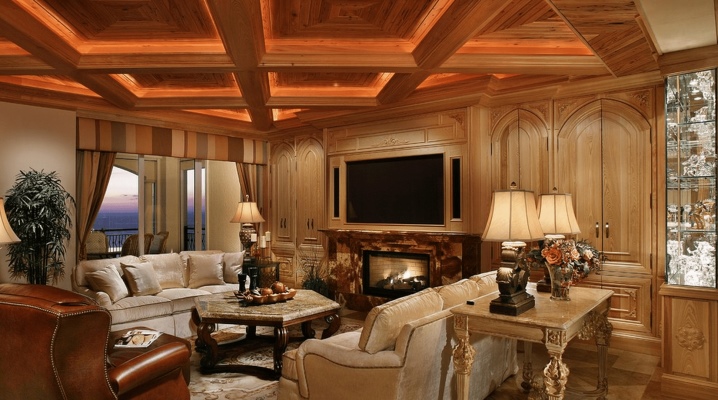
The striving for harmony and perfection is inherent in people by nature itself. When decorating his home, a person tries to make it cozy, comfortable and aesthetic. Fashion trends more and more often return us to the origins of the high art of architecture: the use of natural materials in the classical style, Empire, Renaissance, and Baroque styles is impeccable. Coffered ceilings can play an amazing role in creating beautiful interior finishes.
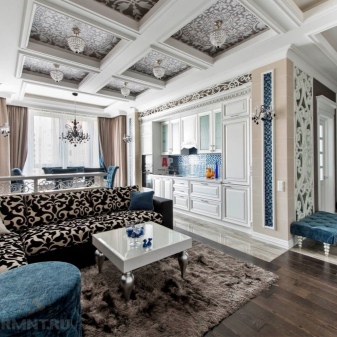

Peculiarities
Caisson is a geometric panel (usually in the form of a rectangle, square, rhombus), recessed into the ceiling. Such ceilings can often be seen in domes or vaults. A series of such panels creates a coffered ceiling. Coffered ceilings have been known since the times of Ancient Greece, Egypt, and Rome. Natural terracotta, marble, stone and wood were traditionally used in their decoration.
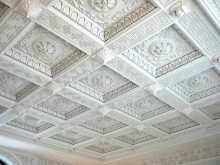
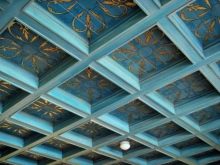
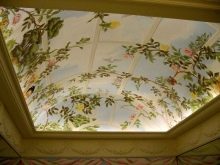
This design is perfectly combined with elegant stucco molding. and sophisticated ceiling painting. Caisson structures are decorated with various rosettes, borders, cornices and embossing. These ceilings are found in architectural masterpieces of various cultures around the world: in castles, palaces, temples, theaters, museums and art galleries. Beamed coffered ceilings were at their peak in the Renaissance or Renaissance era, which was marked by the intellectual and artistic flourishing of ancient society. Previously, such structures carried a predominantly constructive function.
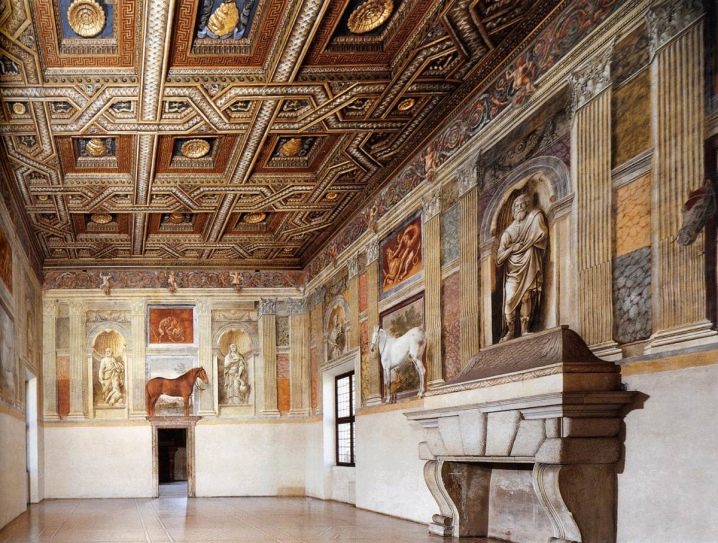
Modern caissons often have an aesthetic purpose. They can be seen in fireplace rooms, offices, home libraries, living rooms, bedrooms, kitchens of private and apartment buildings. This design is able to improve the acoustics of the room, visually expand the space. She adds architecture and airiness to the room, as well as stylistic literacy and completeness. The decorative value of coffered ceilings is original and luxurious.
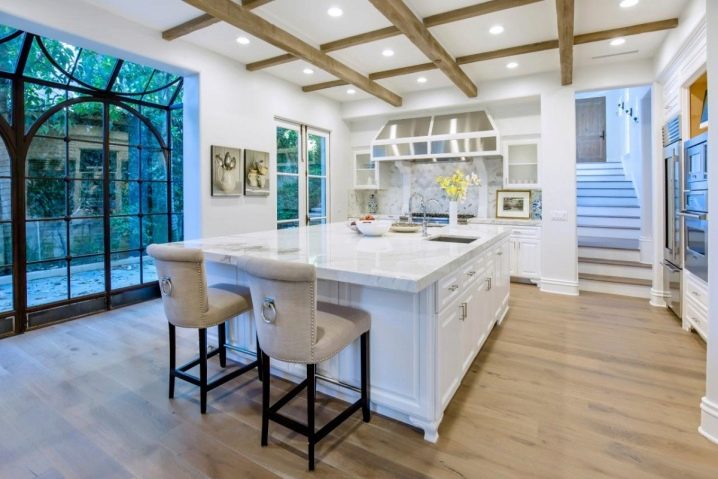
Types and materials
Coffered ceilings can bring nobility, comfort and warmth to the house. They can be made in neoclassical or modern style. It became possible to achieve different stylistic loads due to the different materials used to create such impressive designs.
There are the following techniques for making coffered ceilings:
- classic execution of wood;
- harmonization of wood and MDF boards;
- plasterboard version;
- polyurethane caissons.
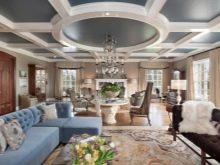
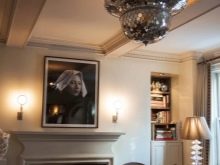
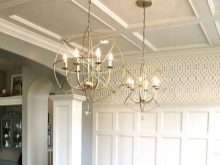
Solid wood coffered ceilings are classics. When creating them, they use environmentally friendly material. Therefore, each individual caisson has an individual, unique and elegant texture. To enhance the effect of elegance and aesthetics, you can use varnish or stain. Natural wood fills the space with dignity and importance, while decorating it.
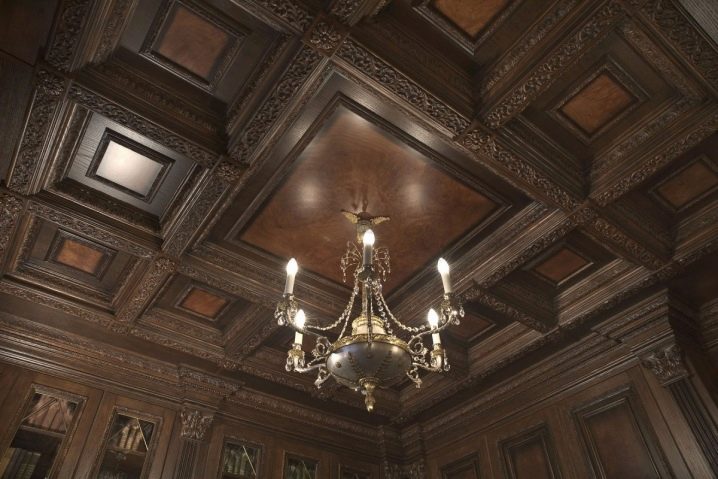
Usually, oak, walnut and ash are used when creating wood coffered ceilings. They give the floors strength, practicality and durability. Wood caissons are a surefire way to enhance the soundproofing of a room. Despite the fact that such ceilings require regular treatment from tree pests that feed on wood, they have invariably remained the leaders of the niche for centuries. This method of transforming coffered structures into decor is suitable for true connoisseurs of the interior, who are not afraid of material costs and laborious installation.

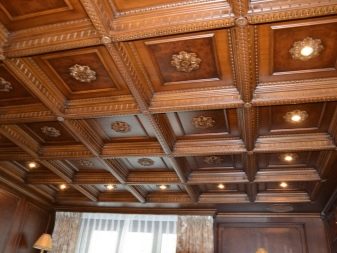
The combination in the process of creating coffered ceilings implies the use of MDF boards instead of some fragments of natural wood species.
This harmonization has several advantages:
- the material does not shrink or deform;
- the installation process is less complicated;
- the cost is lower;
- external identity with a natural wood ceiling;
- guaranteed gorgeous result.
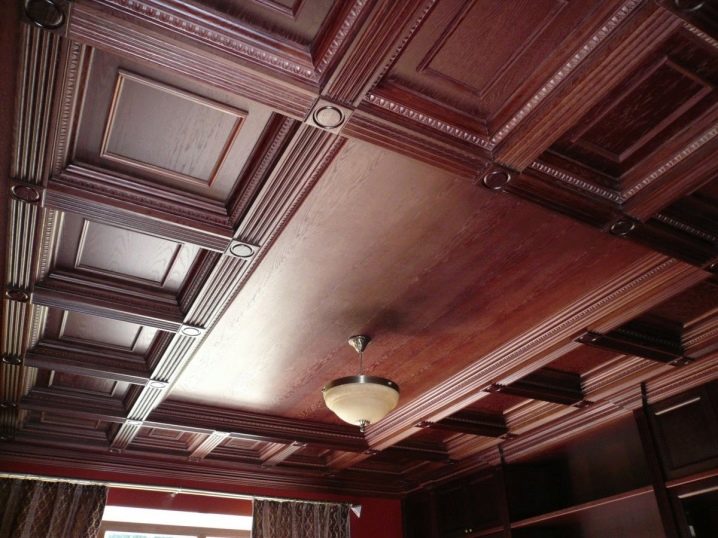
Despite the advantages of the combined method, it also has disadvantages. Due to the use of plywood, the value and naturalness of the caissons are reduced. Plywood panels are not fireproof and waterproof. However, the harmonized coffered ceilings are very effective. Their beauty and sophistication can be emphasized, for example, by a ceiling rosette with gilding and an elegant chandelier.
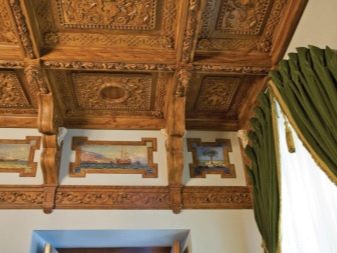
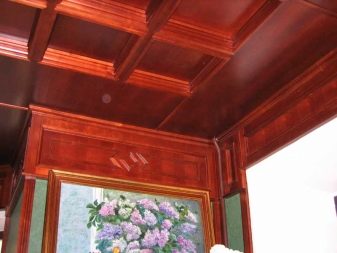
Plasterboard caissons are a delightful design solution. The technology consists in creating a frame for a suspended ceiling made with gypsum plastic. Such a ceiling is decorated with various plaster cassettes, cornices, framed with relief and painting. Geometric ornaments are especially popular.

These coffered ceilings are textured and sophisticated. However, these designs are complex and require preliminary work on the sketch. Due to their high weight and decor features, such ceilings are difficult to maintain (dust removal during operation). Among the advantages, one can single out safety for human health, long service life and efficiency.
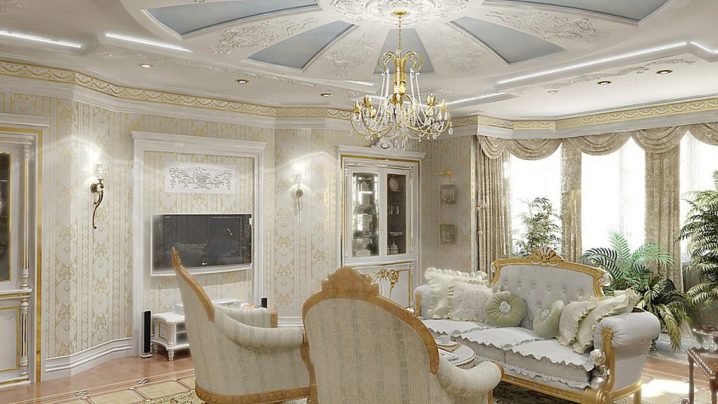
Polyurethane has become a real boon for caissons. This material ideally depicts stucco elements, the texture of natural materials (wood and stone). With its help, you can accurately and in detail convey the structure of the applied composition. Such ceilings are perfect for mounting various types of lighting.
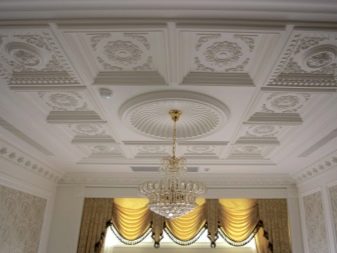
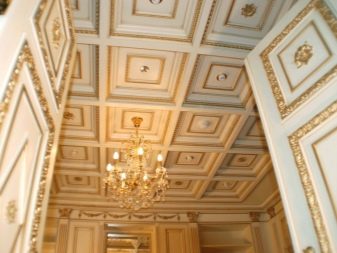
One of the advantages of polyurethane coffered ceilings is their low weight, which greatly facilitates the installation process. This material is easy to clean. It does not change color over time, it is moisture resistant, not prone to destruction. It is easy to give such a ceiling the desired texture and shade, supplementing it with gilding and silvering if desired. The cost of such caissons is relatively low.
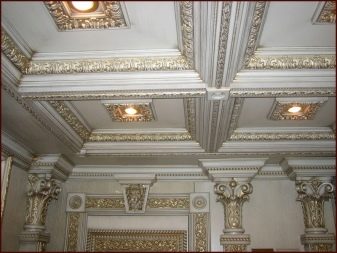
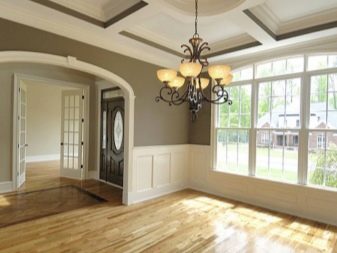
Design
Nothing adds instant personality to an interior like a coffered ceiling. Some of them are originally detailed with box beams and other interesting elements, all kinds of textures and colors. Others are constructed from flat panels and are less difficult to install. However, they all carry a huge number of opportunities and ideas for inspiration.
Here are the basic design tricks:
- striking contrast;
- lightness and airiness;
- unexpected decision.
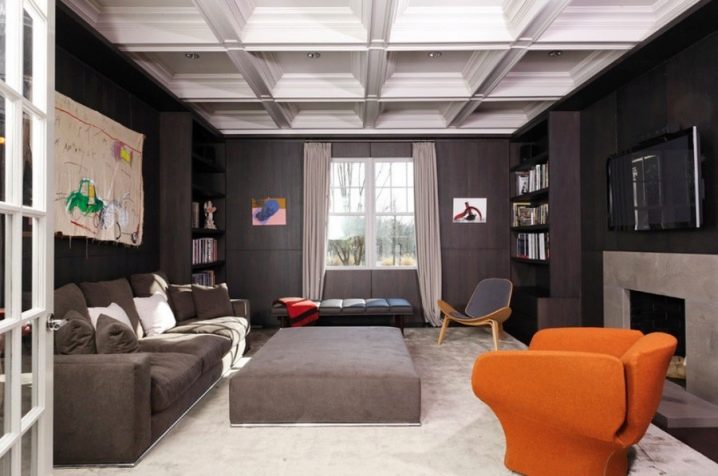
While a coffered ceiling adds striking detail to any room by itself, there is a trick to add contrast. For example, painting the ceiling with an icy shade of white creates the effect of dark walls. The reverse technique is also successful. If there are white or light walls in the space, a dark coffered ceiling will look worthy.
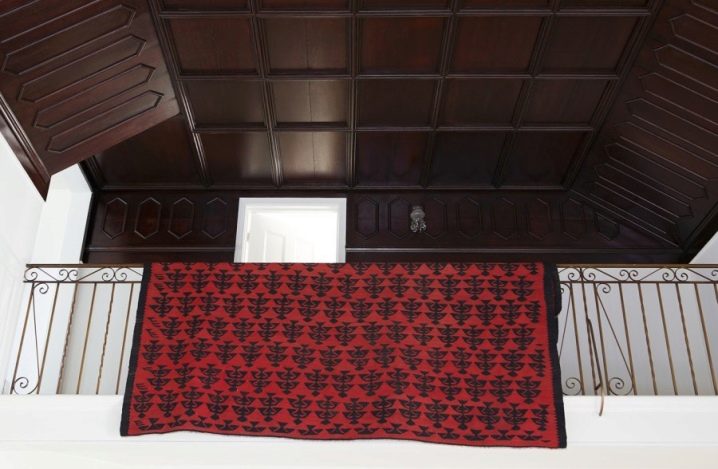
Contrast does not have to be created from light and dark tones. Noteworthy are the golden, woody tones of the coffered ceiling. They enhance the warm tones of furniture and contrast, for example, with leading white walls, a black accent surface, carpeting. You can match the shade of the coffered ceiling to the floor.
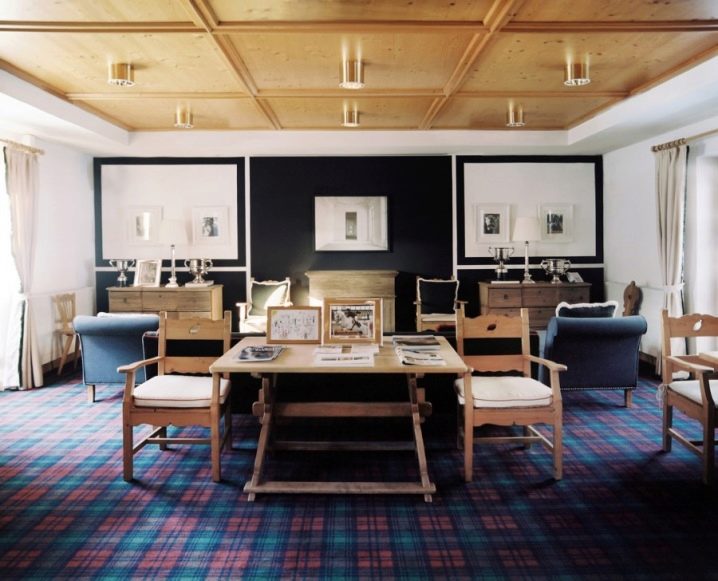
If white or light walls abound in the workspace, dark tones can be harmoniously distributed on the ceiling and floor, as well as decorate the elements of built-in bookcases with them. Contrast can also be created on the ceiling itself by artfully painting the interior of the panels with a dark color while maintaining the white finish. Add in original patterned wallpaper and bold pendant lighting and the result is a stellar example of modern design.
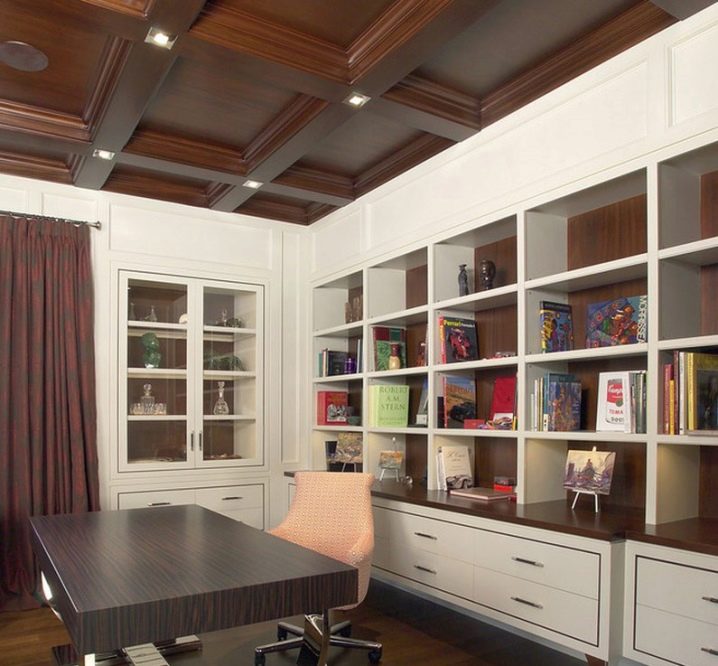
Another professional coffered ceiling design technique is to make them light and airy. Cassette ceilings are the ideal choice for light and airy spaces that are filled with freshness. A coffered ceiling detail can add personality to a space. She is able to reflect interesting fragments of decor in the room, providing a strong focus on a specific design element.
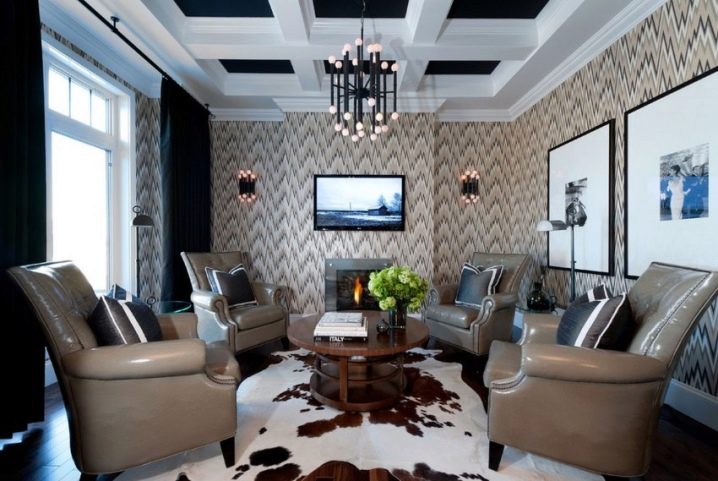
Kitchens are a popular space choice for coffered ceilings, especially when it comes to white kitchens, or spaces done in light warm colors with French panoramic windows and open views. Large recessed ceiling panels can enhance the open atmosphere of such a room. If there is a high ceiling in a light and airy living room, caissons will help draw attention to it. It will be especially effective if you add extravagant pendant lighting to the structure.

Do not forget about the possibilities of coffered ceilings in the dining area. An open dining space can radiate a subtle undertone when strong ceiling details are the perfect accompaniment to it, creating a vibrant palette in its own way.
This is due to the fact that they are able to place a moderate emphasis on space, for example, by emphasizing:
- the tenderness of the picture on the wall;
- green plants and fresh flowers on the table or windowsill;
- beaded pendant lights;
- graceful veiled backlighting;
- lace on chair covers.

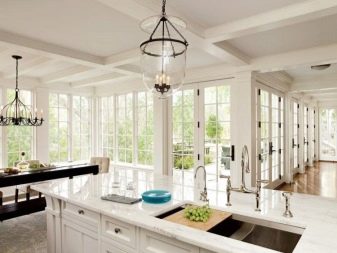
Coffered ceilings attract attention with their complexity. Light-colored walls enhance the open atmosphere of the room, making them ideal for interiors with coffered ceilings (such as an eclectic dining room). Sometimes it's nice to add an unexpected touch, use a non-trivial design. For example, you can place an attractive Art Deco pendant lamp with its chic. An interesting design solution will be the light of the pendant lights. Coffered ceilings are a way to show courage and challenge. To go beyond the template and achieve originality, you can use interesting authentic wallpapers, eye-catching panels and sections.
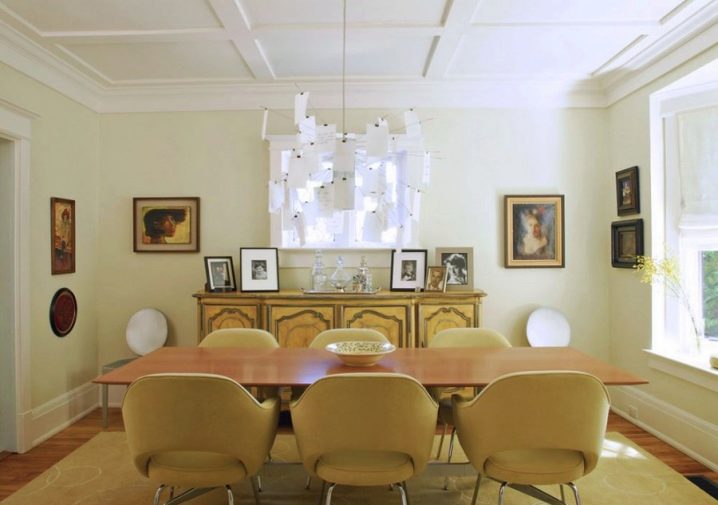
Classic caissons are made up of rectangles and squares. An unusual, but especially stylish solution would be to demonstrate geometry consisting of polygons with a pattern. You can paint the ceiling with a special color and add a handmade pattern. A coffered ceiling like this will look perfect.
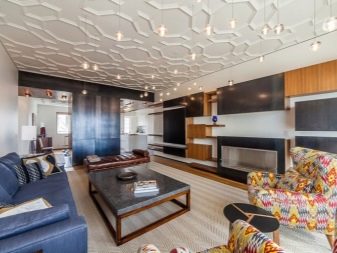

There are examples that clearly prove that good design can be accompanied by warm rustic motives and modern taste. Below is a snapshot of a home whose owners have designed a ceiling to help solve wiring problems. The result is nothing short of delight. This design looks unique.
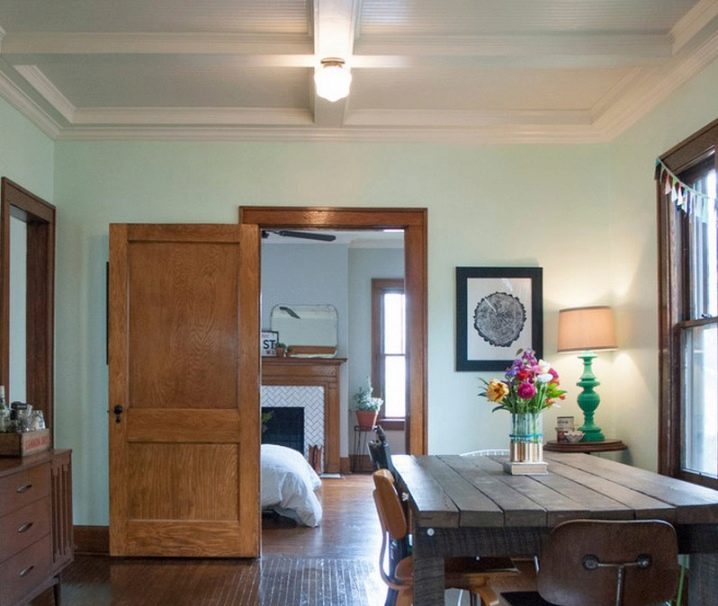
Tips & Tricks
Since the design of coffered ceilings has a number of features, you need to remember some important recommendations and tips if you plan to design and mount such a ceiling yourself:
- Coffered structures are suitable for decorating rooms with high ceilings from 2.5 meters (the higher the better).
- Depending on the style and materials, you can expand the space or make the upper borders visually lower (you need to be especially careful with dark-colored caissons).
- If the design plan does not imply an emphasis on the ceiling, it should be made white or light.

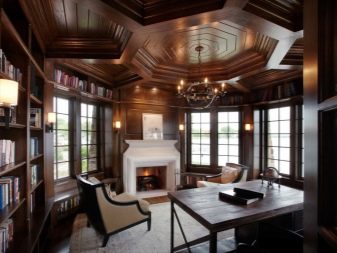
- The larger the space, the smaller the coffered cassettes should be. In small rooms, it is recommended to make recessed panels larger.
- When choosing a wooden coffered design, it is necessary to observe the color matching of the ceiling, floor and furniture in order to achieve a harmonious design.
- Enhancing the aesthetic effect can be achieved through skillfully selected lighting. Poorly thought out backlighting can ruin the whole picture.
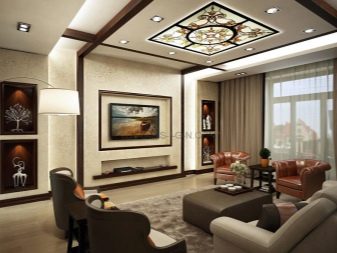
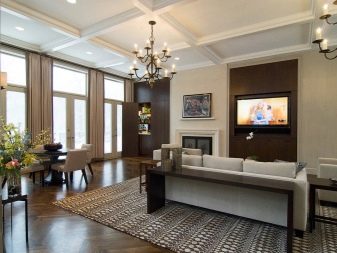
The coffered ceiling is not universal, therefore, it is not organic for all interior styles. Self-installation of caisson structures requires high-quality preparation, the development of a preliminary professional sketch design, taking into account all the details of the process and the help of several people in the installation.
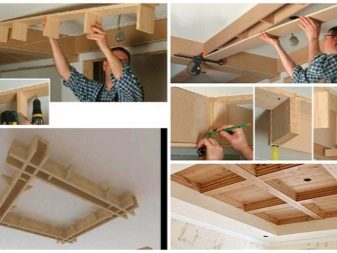
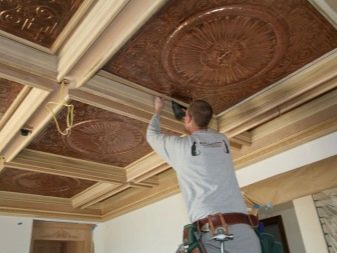
Beautiful examples in the interior
Based on the characteristics of the room to be decorated, in large spaces it is appropriate to create a center composition with the help of caissons.
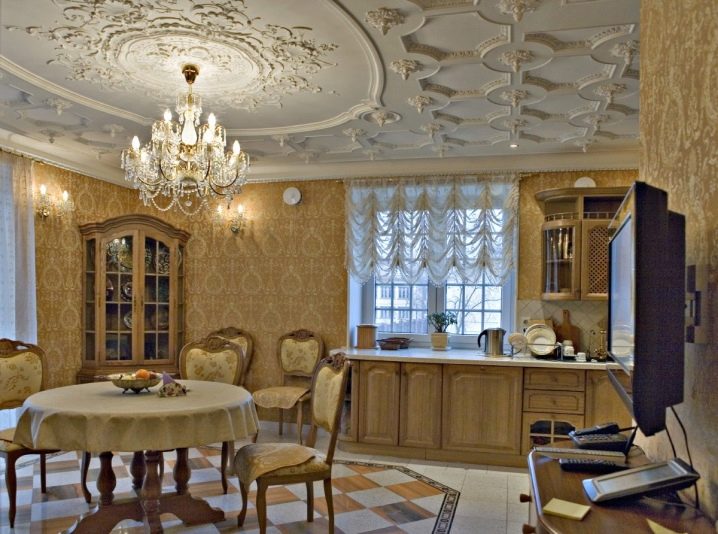
The elegantly designed circle in the center of the room will create a sense of aristocracy, evoke the spirit of the ballroom with its charm and luxury. The caissons will disperse symmetrically in different directions from the central composition.
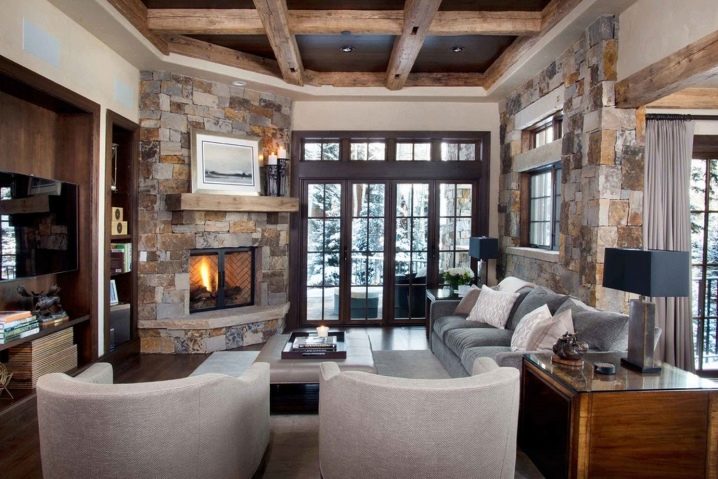
An impeccable technique: in accordance with the center of the circle on the canvas, place an object of the same shape on the floor, which will mirror the geometry of the center of the coffered composition. It could be a table or a rug. An outlet with a beautiful chandelier will help to emphasize the exclusivity of the design.
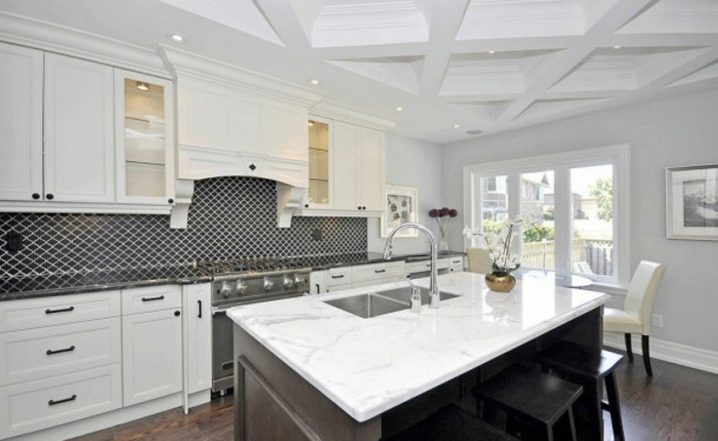
Caissons can be successfully used in a trendy and modern style, such as a loft or chalet. Roughly finished timber, massive intersecting beams help to achieve the desired design direction and a modern interpretation of the caissons. Naturalness and naturalness of wood, textiles are welcome. The competent approach of a designer with a developed sense of taste is able to create an incredibly stylish decor.
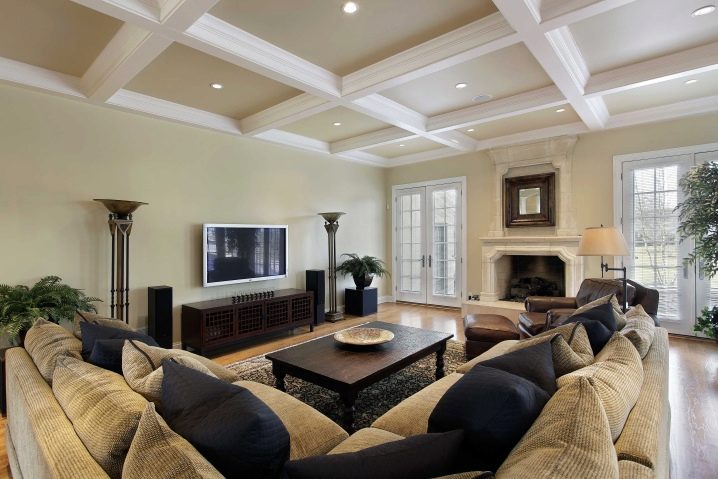
An interesting example of the use of a coffered ceiling in an interior is the diagonal coffered ceiling. If you place the ceiling panels diagonally relative to the walls of the space to be decorated, you get a very original effect. In the same way, it is easy to achieve a mirror-like ceiling and floor, since parquet tiles are usually laid out using the same technology.
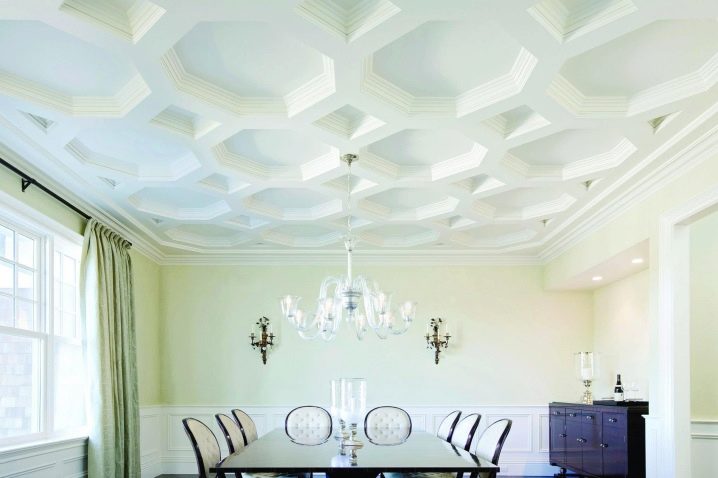
Another beautiful design option, albeit quite complex, is honeycomb-shaped panels. This option looks interesting in the interior, but requires precise mathematical calculations.

The design of the coffered structure using lining is typical for country and Provence styles. Natural woods, painted white, also reflect the Scandinavian architectural style. This design option carries nobility.
See the next video for more on this.













The comment was sent successfully.